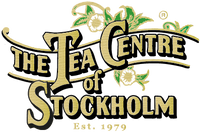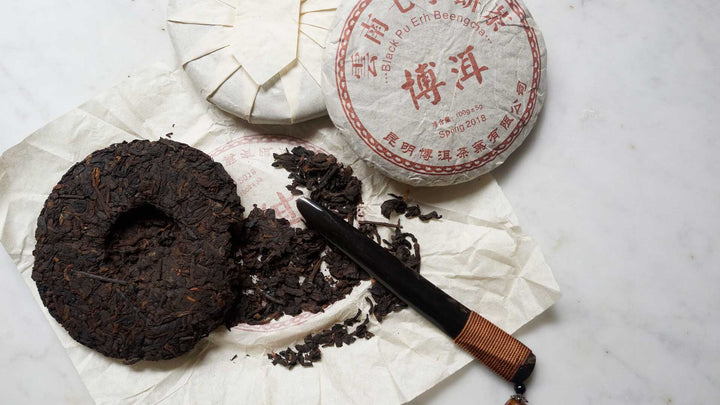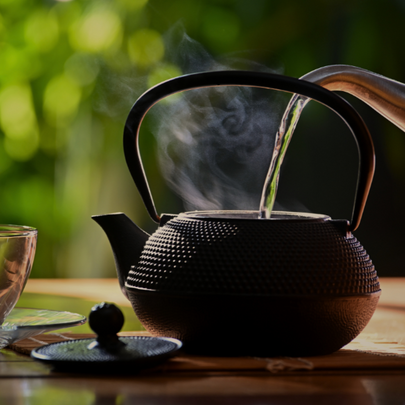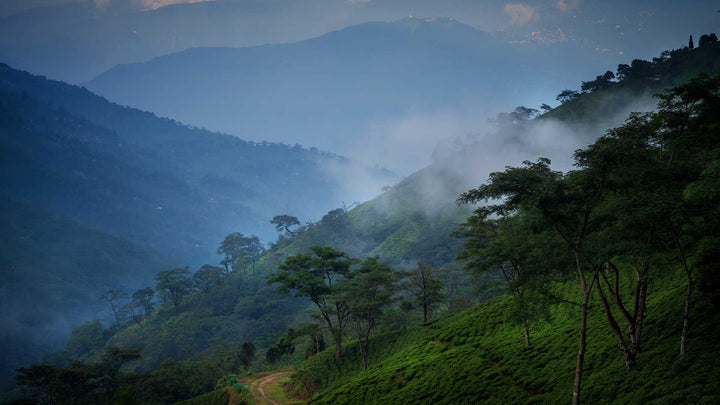Darjeeling First Flush
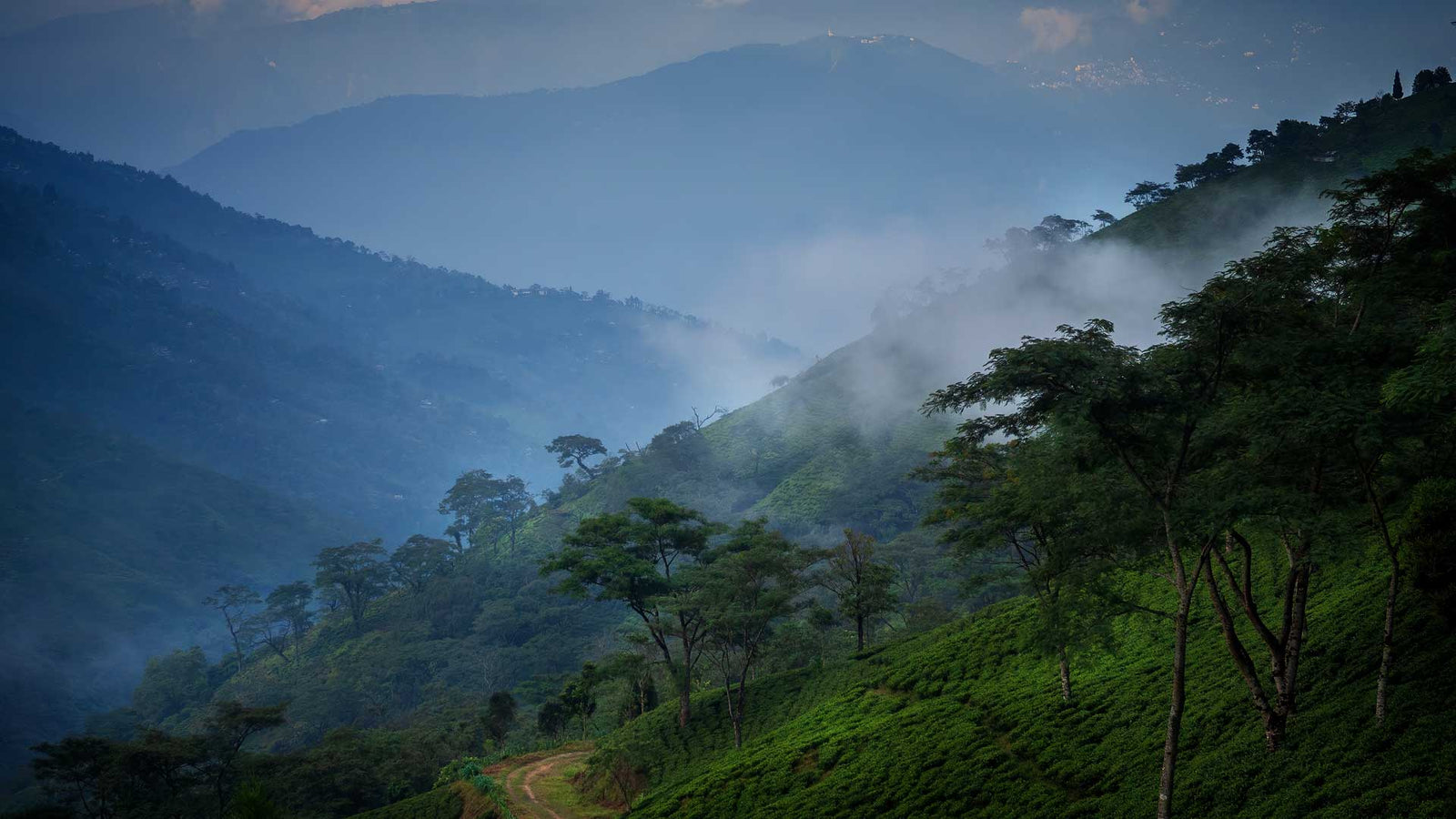
A PERFECT BALANCE
If one were to try to think of the perfect location for a tea plantation, several years would not be enough to come up with all the diverse factors that make the Indian region of Darjeeling so uniquely suited to this task. The altitude, the amount of rainfall, the shade from the surrounding mountain peaks. These are just a few of the attributes that make the region a paradise for Camellia Sinensis – the plant that forms the basis of Darjeeling tea.
The first harvest, often called “the first flush”, of the plant’s leaves has become famous worldwide for the exquisite tea produced from it. The harvest takes place around March to May each year and is one of the absolute highlights for all tea lovers.
Thinking back to his first visit to Darjeeling, Gihan Mauris, CEO of The Tea paints
“The leaves stretch as far as the eye can see and are so incredibly green,” he says, “that the entire mountainside looks like a sea of neon when the sun shines on them.”
A DELICIOUS FUSION
From this sea of neon is made one of the world's most sought-after drinks. A black tea that, despite its name, is pale yellow in the glass and hides a myriad of flavors. A first flush of Darjeeling is greatly influenced by the unique conditions around it and shifts in character along with the terroir – the surrounding nature – in which the specific plant whose leaves you brewed grows.
“Before my first visit to Darjeeling,” Gihan continues, “my father told me to start by tasting the local water and noticing what else was growing around the tea plantations.”
The soil, water, flowers and plants surrounding the plant all have an influence on the character of the tea produced from its leaves. This is especially true for the first harvest when the plant, after resting since last year's last harvest, shoots up with exuberant energy and soaks up the many aromas that surround it. Young grass, floral and fruity notes, and other pleasant spring flavors make themselves known.
Later harvests of the same plant from the same location produce tea of a very different character and are noticeably much darker in the glass.
A LONG-LASTING TRADITION
Because the taste and character of a first flush tea is sensitive to so many factors, plantations label the leaves with more than just the plantation name when they are sold. A serial number reveals several other relevant factors such as the day the leaves were picked, the time spent on each processing step, the exact position of the plant on the plantation and much more.
For example, an exceptional batch of Darjeeling tea may originate from a specific part of a hillside where the slope is just right for the plant to receive the right amount of water. Such a batch becomes very popular during the chaotic trading period that follows the harvest and as The Tea
“When Darjeeling first flush becomes available around March,” explains Gihan, “the tea trade turns into a hectic scene from Wall Street.”
Decisions need to be made quickly as the tea's immense popularity ensures it won't be on the market for very long. For three decades, The Tea has
After tasting around 200 batches of first flush, one to three are selected to be imported to the store in Stockholm.
A WELL-WORTHY DOSE OF PATIENCE
Due to its relatively low supply, Darjeeling first flush is not sold in the same way as other teas. Tea lovers sign up in advance for a specific quantity and have two weeks when the tea arrives to buy their share before it is put up for general sale. Timing is crucial as tea from the delicate first flush leaves tastes best when consumed shortly after harvest.
When customers collect their share of the precious plant, they are offered the opportunity to sign up for next year's first flush again, which most do immediately. No one has any idea at this point what character the Darjeeling first flush will offer next spring, but so special is this first flush that people happily give The Tea
“I never order anything home that I don't consider to be of the highest quality,” concludes Gihan, “and Darjeeling first flush is truly a unique tea that makes me say 'wow' every year and always takes me back to my first visit to the beautiful mountains.”
“A cup of Darjeeling first flush is a sure sign that a beautiful summer is approaching.”
